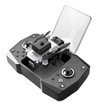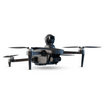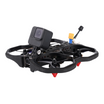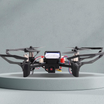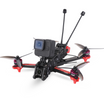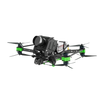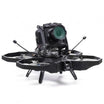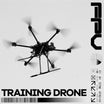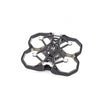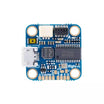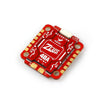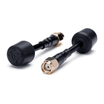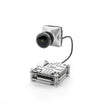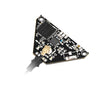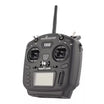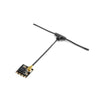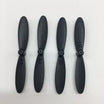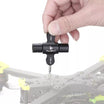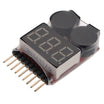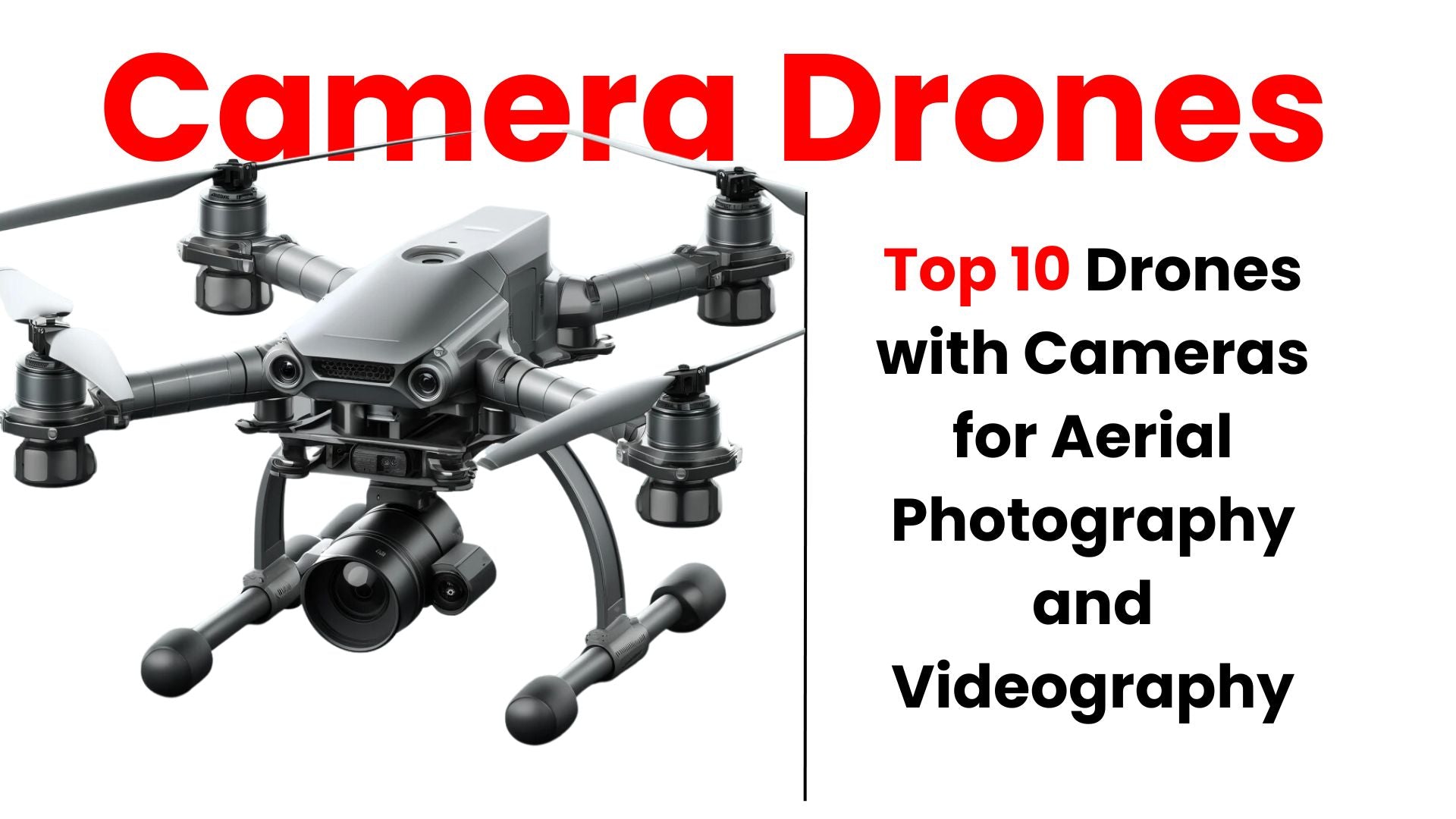In recent years, drones have grown beyond their usual functions in photography and videography, establishing a fresh and fascinating niche in education. These flexible flying vehicles have shown to be effective instruments for developing students' creativity, critical thinking, and problem-solving skills. As the world welcomes technology breakthroughs, it is only natural that education will follow suit, and drones have played an important role in forming the future of learning.
Drones in Education: General Contribution
Drones have captured the public’s imagination for their incredible mobility and camera views from unique vantage points. Yet an equally profound and promising impact emerges within education, where unmanned aerial vehicles (UAVs) uniquely engage students across critical STEM (Science, Technology, Engineering & Math) competencies. By merging experimentation with creativity, drones provide interactive learning tools applicable across a growing number of subjects and age groups.
In this blog we’ll explore emerging use cases for drones from primary schools through higher education. We’ll also consider policies needed to maximise pedagogical opportunities for institutions at all levels. One revelation becomes apparent - while drones promise to transform learning itself, the process of safely adopting the technology also imparts crucial critical thinking skills to both students and administrators alike.
Why Drones in Education?
More than just aerial gimmicks, drones offer versatile instructional platforms:
Multidisciplinary Alignment
Designing, building, programming and operating UAVs incorporates diverse competencies from physics and maths to computer science and design thinking. This serves learning objectives across science, vocational and arts fields uniquely.
Career Preparation
Drone industries face acute talent shortages today especially across technical and creative domains. Early UAV exposure better prepares graduates for high growth vocational opportunities. Academic programs focusing on robotics and drone specialties continue proliferating globally as adoption raises across commercial spheres.
Drone Uses Across Academic Levels
UAV education applications span a vast spectrum depending on student age and subject focus. Let’s survey some prominent cases organised by academic level.
Primary & Secondary School
Even elementary age students enjoy learning via drones as physical manifestations merging STEM foundations from aeronautics to coding. Curriculums leverage controllable UAVs introducing core competencies through kinesthetic experiences that stick with budding young minds.
Engaging programs offered by organisations like Drones4STEM provide turnkey equipment, lesson guides and support enabling teachers focused on core topics rather than drone technology itself.
Subjects brought to life through flight include:
- Physics - Newton’s laws of motion, gravity, energy conversion- Maths - Geometry, spatial reasoning, coordinate plotting, trigonometry
- Programming - Experimenting with changing variable values to achieve precise flight responses when entering their own formulae and scripts
- Geography - Real-time topographic analysis finding lakes, hills and analysing erosion patterns from aerial views
- Ecology – Surveying flora health across biomes, identifying wildlife populations
- Economics – Hypothesizing location factors influencing farms or commercial zones
Additionally, building basic drones from component ingredients allows budget-conscious necessary skills practising tools disassembly/reassembly, designing experimental instruments, and following procedural workflows. These transferable capabilities scaffold into more advanced capabilities applicable through college and careers leveraging analytical troubleshooting everyday.
Even without formal curriculums, novelty drone devices still capture attention and enjoyment stimulating intrinsic motivation Supplementary video channels also provide a wealth of self-directed passive learning touching key principles powering flight itself.
Higher Education Applications
University environments harness drones toward numerous research objectives across studies like:
Engineering – Advancing drone platforms and payload performance through applying core scientific and design principles in substance. Exploring next generation navigation, efficiency and functionality frontiers.
Infrastructure – Leveraging drone data collection of structures, terrain and mapping environments fuels better decision making around improving built worlds.
Security – Testing surveillance and public safety response coordination involving unauthorised drone detection, tracking and neutralisation countermeasures.
Agriculture – Assessing crop health, spotting infestations early, targeted pesticide spraying optimization. Multispectral sensor data improves yields through precise inputs informed by rich aerial insights.
Ecology & Conservation – High resolution habitat imaging combined with AI animal detection informs wildlife population estimates and behaviours. Preserving biodiversity hinges on data-centric environmental approaches.
Public Policy – Optimising regulation, air traffic management systems and societal risk education as adoption rises requires interdisciplinary examination by public administrators, lawyers and more.
A common thread across higher education drone programs revolves around interpreting rich data streams captured from aerial vantage points, facilitated by UAVs. This analytical expertise gained from working alongside drones scales into nearly all industries hungry for extracting business intelligence - which bodes extremely well for forward-looking student employment prospects upon graduation!
InsideFPV's BIR V2 in Action: Revolutionising Learning
Among the many drones available on the market, InsideFPV is proud to present the BIR V2 - an experience drone created with beginners and educational settings in mind. Let's look at the characteristics that make the BIR V2 an excellent choice for learners of all ages.
1) Beginner-Friendly Features
The BIR V2 is designed to be user-friendly, ensuring a smooth learning curve for new drone users. Its compact design and crash-free technology make it an excellent choice for new pilots, whether they are navigating indoor environments or exploring the vast outdoors.
2) High-Quality Images
The BIR V2 is equipped with a 720p front camera and a 610p bottom camera, ensuring high-quality imaging. This capability is not only necessary for shooting amazing aerial photos, but it also expands the drone's capabilities in educational settings. Students can document their projects, conduct aerial surveys, and view the world from a unique perspective.
3) Versatility in Learning Environments
The BIR V2 isn't limited to indoor environments. With a speed of 20-30 kmph, a range of 150 metres, and a flight time of 6-6:30 minutes, it easily adapts to a variety of learning contexts. Its adaptability to both indoor and outdoor environments makes it a useful tool for schools looking to incorporate drone technology into their curriculum.
4) Innovative educational features.
What distinguishes the BIR V2 is its emphasis on education. The drone has characteristics that assist learning in an interactive and engaging manner:
- Obstacle Avoidance and Stabilization
Safety is crucial, particularly in educational environments. The BIR V2's four-way obstacle avoidance system ensures a safe flying experience, lowering the chance of accidents. Furthermore, its stabilisation technology adds to smooth and controlled flights, allowing students to focus on the educational aspects rather than worrying about flying the drone.
- Motion Sensors and Intelligent Flight Modes
The incorporation of a motion sensor and adaptive flight modes enhances interactivity. Students can learn about the concepts of motion detection, and the intelligent flight modes allow for experimentation and innovation in drone behaviour.
- Educational Mounts
To encourage project-based learning, the BIR V2 comes with mounts for various attachments. This opens up opportunities for connecting sensors, cameras, or other teaching tools, allowing students to adapt their drones to specific learning objectives.
- STEM-focused design.
One notable aspect of the BIR V2 is its clear emphasis on STEM education. This drone is intentionally intended to fit with educational objectives, ensuring youngsters not only enjoy the thrill of flying a drone but also learn essential STEM topics.
The integration of drones in education represents a paradigm shift in how we approach learning. As the drone industry continues to evolve, it is crucial for educators, parents, and policymakers to recognize the transformative power of drones in shaping the educational landscape. By embracing technology like the new BIR V2, we are not only preparing students for the future but also cultivating a generation that is adept at navigating the complexities of our rapidly advancing world. Whether it's a geography class exploring landscapes from the sky or a coding workshop programming the next flight path, drones have the power to elevate education to new heights, quite literally.
FAQs
How have drones become valuable tools in education?
Drones have become valuable tools in education by offering hands-on learning opportunities, interdisciplinary applications, and fostering problem-solving skills. They provide a fresh perspective for students to explore subjects, bridging the gap between theoretical knowledge and practical applications.
What subjects benefit from the interdisciplinary applications of drones in education?
Drones can be integrated into various disciplines, including science, maths, geography, and the arts. This interdisciplinary approach results in a more comprehensive learning experience for students.
How does the integration of drones in education prepare students for future careers?
Integrating drones into education exposes students to the latest innovations, preparing them for future careers in aerospace engineering, data analysis, and environmental science. It aligns with India's vision for a skilled workforce contributing to technological advancement.

